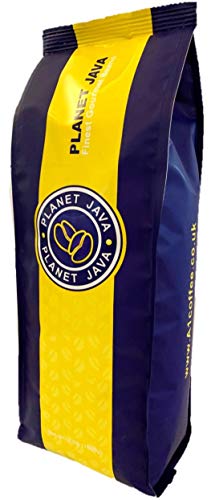Five People You Should Know In The Which Coffee Beans Are The Best Industry

Which Coffee Beans Are the Best?
When it comes down to choosing a great cup of coffee, the type of beans you select makes the difference. Each variety has a distinct flavor that goes well with a variety of drinks and food recipes.
Panama leads the pack due to their rare Geisha beans that score highly in cupping tests, and are also expensive at auction. Ethiopia and particularly Yirgacheffe bean, is not far behind.
1. Geisha Beans from Panama
If you're looking to find the top coffee beans in the world Look at Geisha beans from Panama. Geisha beans are highly prized due to their unique aroma and flavor. These rare beans, harvested at high altitudes undergo an unusual process which gives them their unique flavor. The result is a coffee that's rich, smooth, and full of flavor.
Geisha coffee is a staple of Ethiopia but was introduced in Panama for the first time in 1963. Geisha coffee has been known to win competitions with its distinctive taste and flavor. Geisha beans are also expensive due to the work involved in growing them. The Geisha coffee plant is more difficult to cultivate than other coffee plants, because it requires higher elevations and unique climate conditions.
Geisha beans must also be handled with care, as they are delicate. They need to be carefully separated and carefully prepared to roast. Otherwise, they may turn bitter and acidic.
The beans are grown at the Janson Coffee Farm, which is located in Volcan, Panama. The farm is dedicated to preserving the environment and specializes in producing top-quality beans. They make use of solar panels to generate energy, recycle water and waste material, and employ enzyme microbes to improve the soil. They also reforest the area and reuse water to wash. Their coffee is Washed Geisha, which was awarded the highest score in a Panama Coffee Competition.
2. Ethiopian Coffee
Ethiopia is a major coffee producer with a long and rich history of producing the best brews around the globe. Ethiopia is the fifth largest producer of coffee in the world. Their beans are valued for their unique fresh, fruity and floral flavors. Ethiopians unlike other beans, taste best when they are roasted to medium roast. This allows the floral notes to be preserved while highlighting citrus and fruity flavors.
While Sidamo beans are renowned for their sour, citric acidity, coffees from other regions like Yirgacheffe and Harar are also thought to be some of the finest in the world. Harar is Ethiopia's most famous and oldest coffee variety. It has a distinct wine and mocha flavor. Coffees from the Guji region are also renowned for having complex flavors and a distinct Terroir.
Another type of coffee that comes from Ethiopia is called natural process, and it is produced using dry-processing instead of wet-processing. Wet-processing involves washing coffee beans which tends remove some of its fruity and sweet flavor. Natural Ethiopian coffees that were processed were not as well-known than their washed counterparts. They were used more to brighten blends than available on the specialty market. However, recent technological advancements have enabled better quality natural Ethiopians.
3. Brazilian Coffee
Brazilian Coffee is a rich mix of various types of beans. It is known to have a low acidity. It is sweet with hints of chocolate. The flavors can vary depending on the state and region in which it is produced. It is also renowned for its nutty and citrus notes. It is good for those who enjoy medium-bodied coffee.
Brazil is the world's biggest coffee producer and exporter. Brazil produces more than 30 percent of the world's total coffee beans. It is a huge agricultural industry, and Brazil's economy relies heavily on it. coffee beans delivery coffeee.uk is perfect for coffee cultivation in Brazil and there are 14 major regions of coffee production.
The primary beans used in Brazilian coffee are Catuai, Mundo Novo, Obata and Icatu. All of these are varieties of Arabica. There are many hybrids that contain Robusta. Robusta is the name of a coffee bean that originated in Sub-Saharan Africa. It's not as flavorful and aromatic as Arabica, but it's more easy to cultivate.
It is important to note that slavery continues to exist in the coffee industry. Slaves in Brazil are often subjected to long and exhausting work hours and often do not have adequate housing. The government has taken measures to deal with this issue, including programs to assist coffee farmers with their debts.

4. Indonesian Coffee
The top coffee beans of Indonesia are known for their dark, powerful flavor and earthy sour taste. The volcanic ash in the soil gives them a earthy taste and a robust body. They are ideal for blending with beans from Central America or East Africa that have a higher acidity. They also take well to darker roasting. Indonesian coffees have a rich and rustic flavor profile and often have tasting notes of leather, tobacco wood, ripe berries, and spice.
The biggest producers of coffee in Indonesia are located on Java and Sumatra, with some coming from Sulawesi, Bali, and Papua New Guinea. Many farms in this region employ a wet-hulling method. This differs from the washed processing process that is prevalent in most of the world, where the coffee cherries are de-pulped and then washed prior to drying. The hulling process reduces the amount of water that is in the coffee, thereby limiting the impact rain can have on the quality of the final product.
One of the most sought-after and premium varieties of Indonesian coffee is Mandheling that comes from the Toraja region. It is a full bodied coffee with hints of candied fruit and a smoky taste of chocolate. Other varieties of coffee that hail from the region include Gayo and Lintong. They are usually wet hulled and have a strong and smoky flavor.
